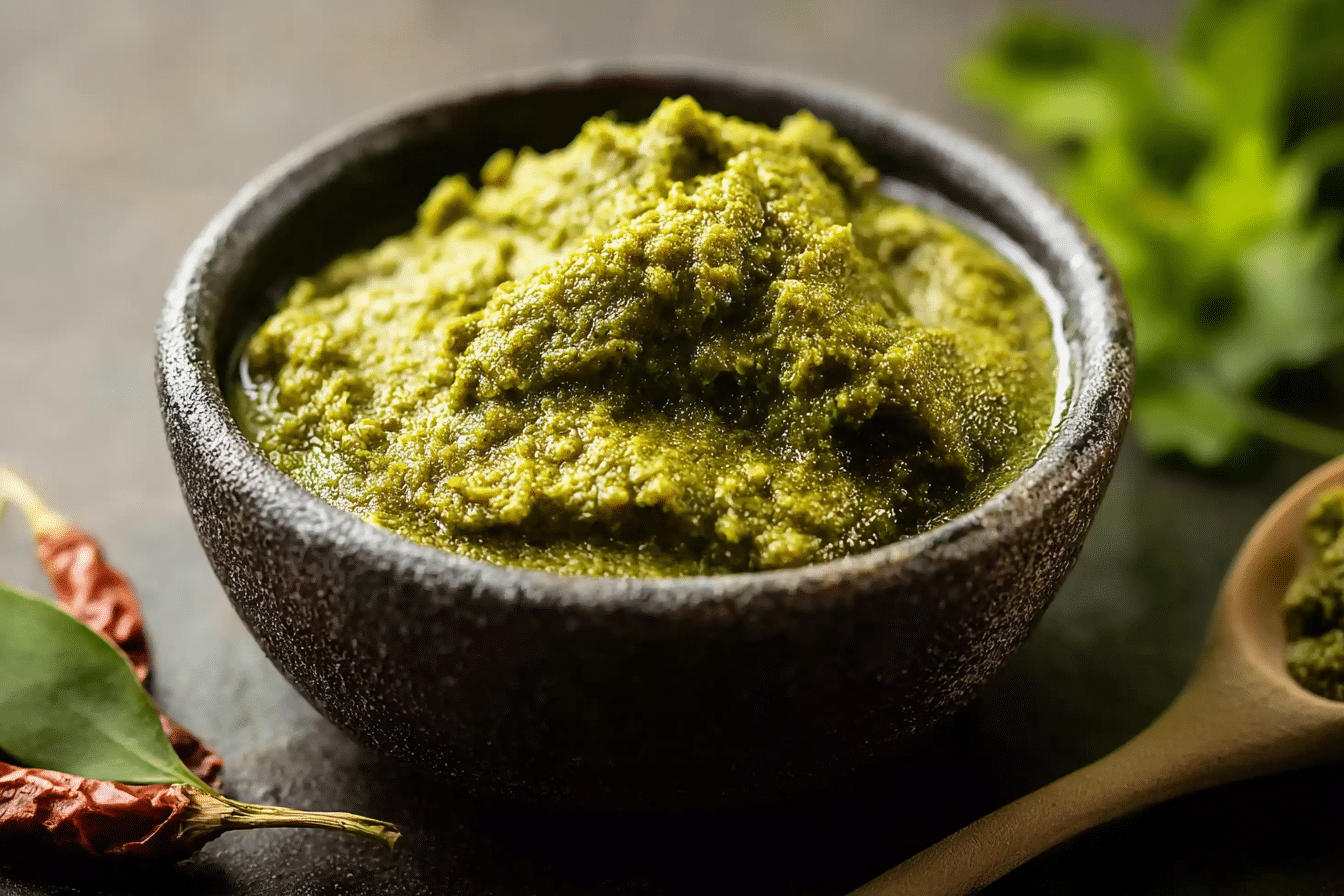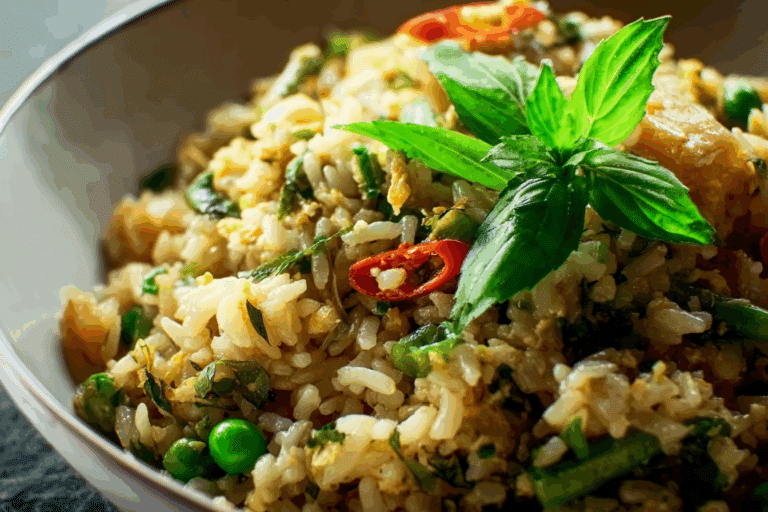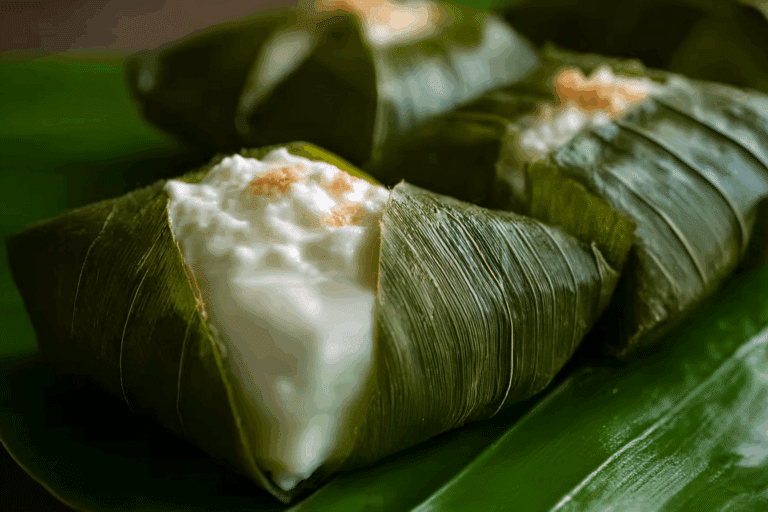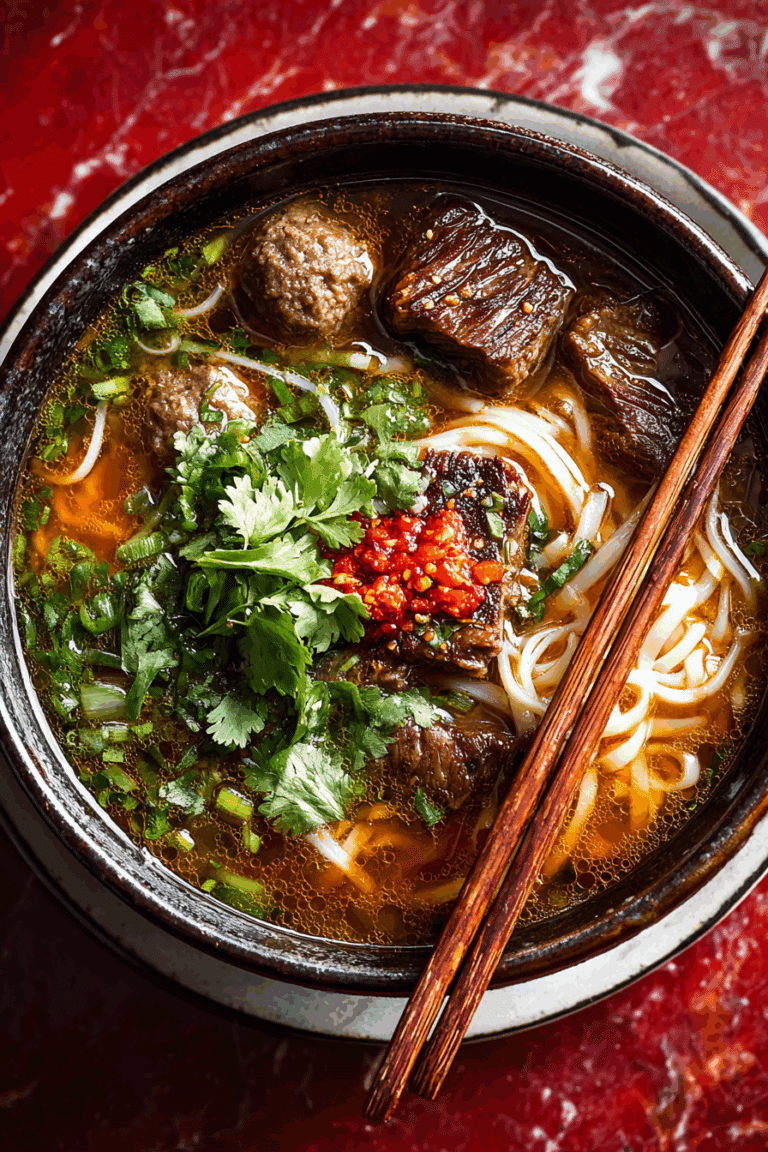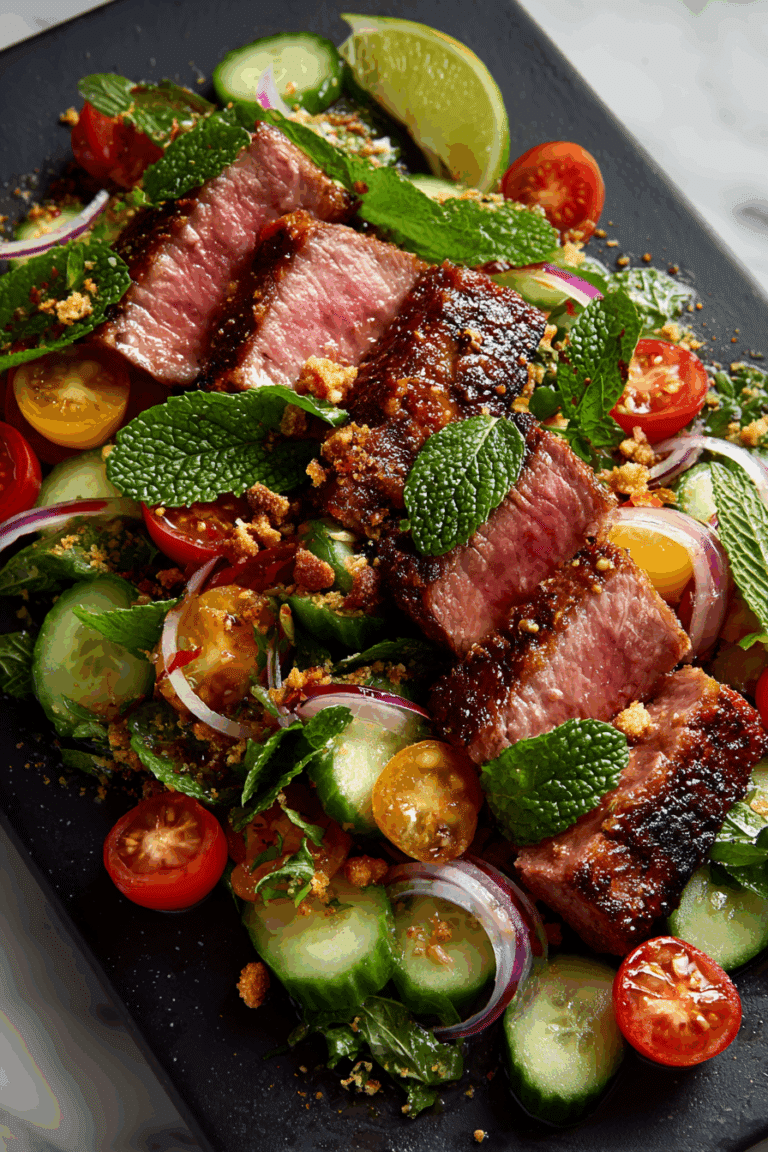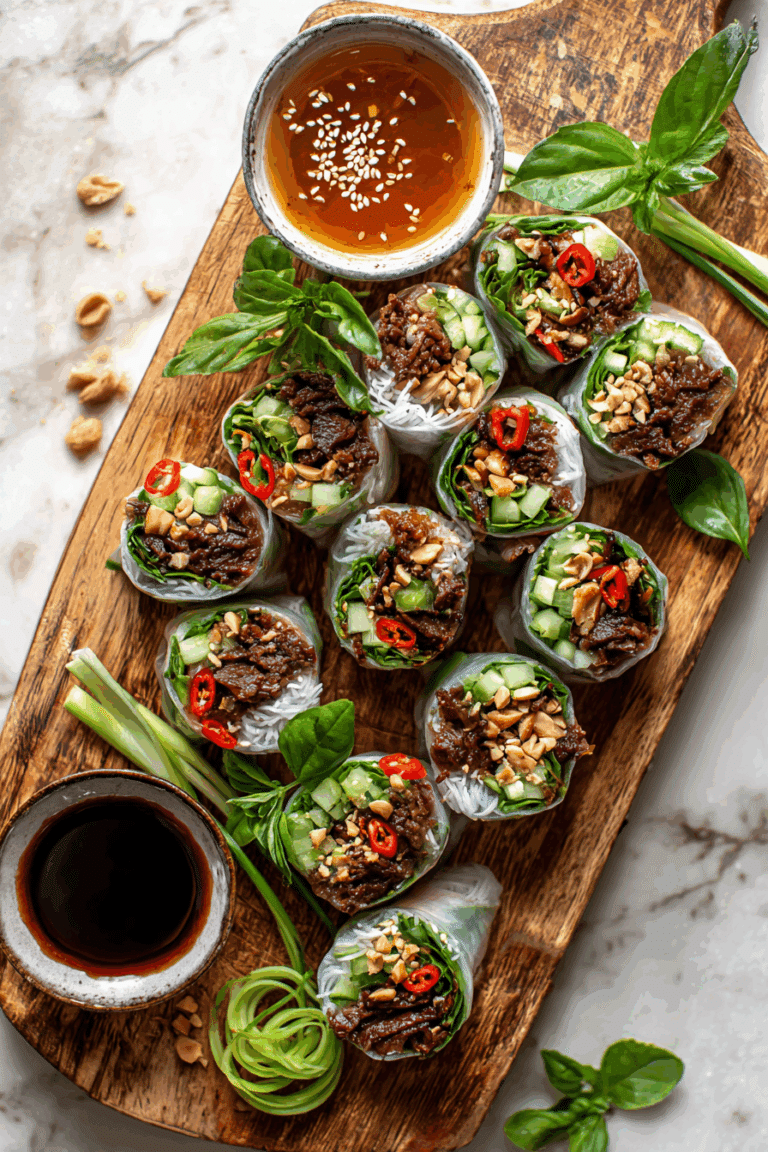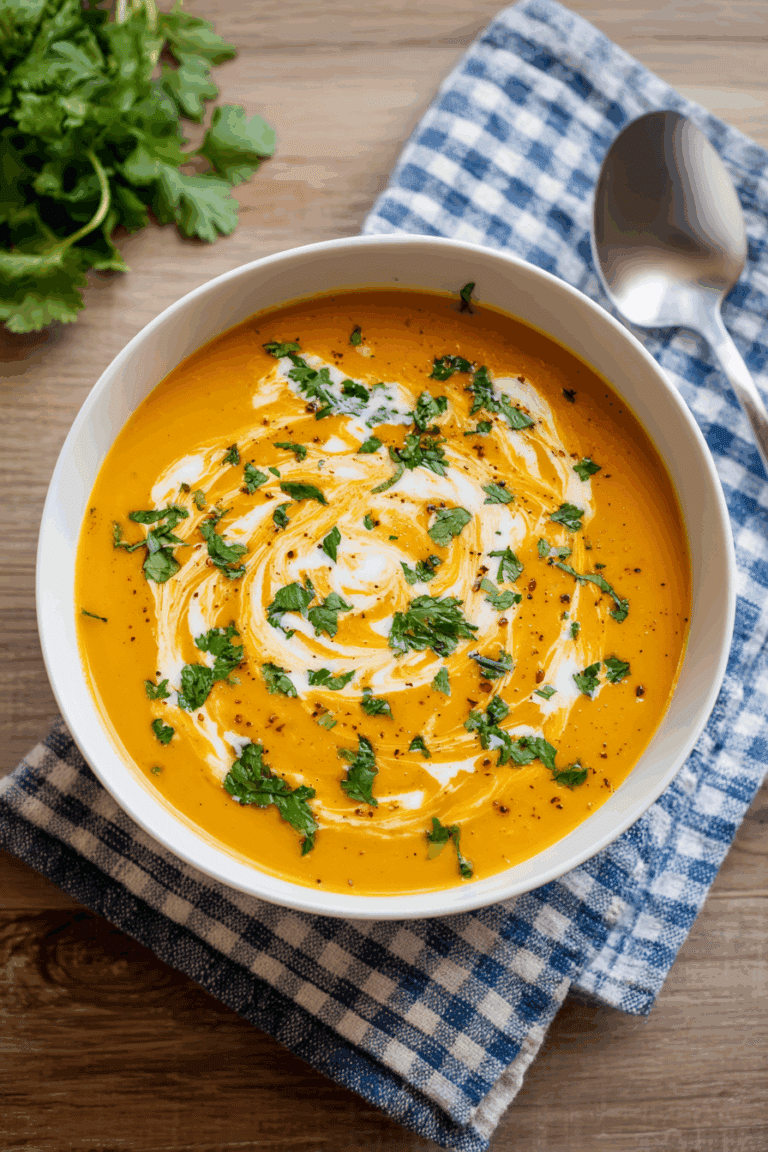Thai Green Curry Paste Recipe You’ll Love Forever
Thai Green Curry Paste is one of those ingredients that can instantly transport you to Thailand even if you are standing in your own kitchen. Its smell is bright and lively, filled with notes of lemongrass, galangal, fresh coriander, and spicy green chilies. Every time I make it, I remember the very reason why I created Just Thai Recipes.
When I first visited Thailand years ago, I was enchanted by how food was more than just sustenance. It was community, family, and memory. I remember watching a woman in a small Bangkok market grinding curry paste by hand with a mortar and pestle. She smiled at me, waved me over, and let me smell her freshly made paste. That moment changed everything. It was warm, spicy, citrusy, and earthy all at once. I had never smelled anything so alive.
When I came back home, I decided to share that feeling through this website. The About page on Just Thai Recipes tells this story, how this small passion grew into a full culinary adventure where I explore and recreate the flavors of authentic Thai dishes. Thai Green Curry Paste quickly became one of the most important recipes for me because it represents the balance and beauty of Thai cooking.
In this post, I will show you not just how to make Thai Green Curry Paste from scratch, but also how to use it properly, how to adjust it to your own taste, and how to make it part of your everyday cooking. You will learn about each ingredient, how to store it, and even the traditional meaning behind this dish. Whether you are an experienced cook or someone who just loves trying new things, this recipe will make you fall in love with Thai cuisine all over again.
Before we begin, remember this: Thai cooking is about harmony. Each element spicy, salty, sweet, sour, and aromatic works together like a melody. The secret is not just in following the measurements but in tasting and adjusting as you go. That is how real Thai cooks do it, and that is how I want you to experience it too.
Table of Contents
Table of Contents
Ingredients
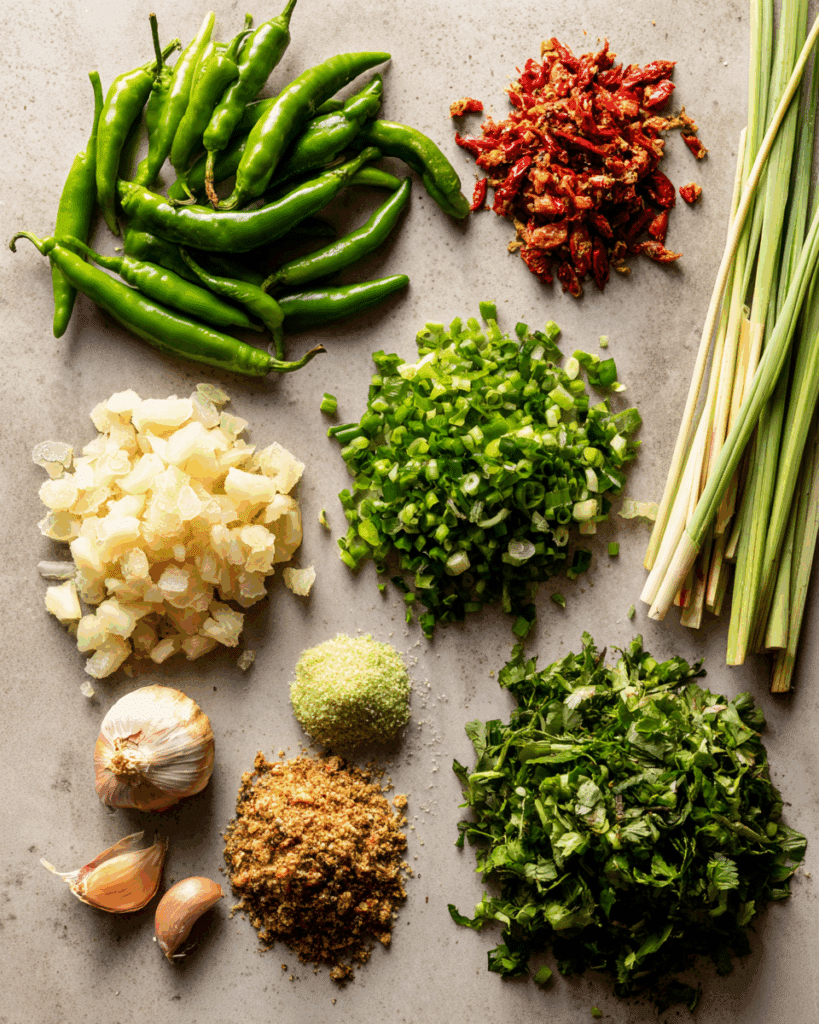
Making Thai Green Curry Paste at home might seem intimidating, but once you see how simple and fresh the ingredients are, it becomes something you will want to do again and again. The beauty of this paste is that everything is natural, colorful, and bursting with flavor. Here is exactly what you will need:
- 4 green cayenne pepper chilis, deseeded and chopped
- 6 Thai green chilis, chopped
- 2 red shallots or eschallots, chopped
- 2 lemongrass stems, trimmed and finely chopped (about 2.5 to 3 tablespoons)
- 2 tablespoons galangal, grated
- 5 cloves garlic, chopped
- 2.5 teaspoons dried shrimp paste (Belacan)
- 2 teaspoons lime zest, grated
- 1 teaspoon ground coriander
- 1 teaspoon ground cumin
- 1/4 teaspoon white pepper
- 1/4 teaspoon turmeric
- 2 tablespoons chopped coriander root and stem
- 1/4 cup coriander leaves, loosely packed
- 2 to 3 tablespoons water, as needed
Each of these ingredients plays a specific role. The green chilis bring heat and color, the lemongrass gives a bright citrus note, and the galangal provides that unmistakable earthy spice that defines so many Thai dishes. Dried shrimp paste adds depth and umami, grounding all the fresh herbs and aromatics.
If you are missing an ingredient, do not worry. Thai cooking is flexible and forgiving. You can use ginger instead of galangal if you cannot find it, or skip the shrimp paste if you prefer a vegetarian version. It will still be delicious.
Once everything is ready, it is time to blend it all together.
Step-by-Step Instructions
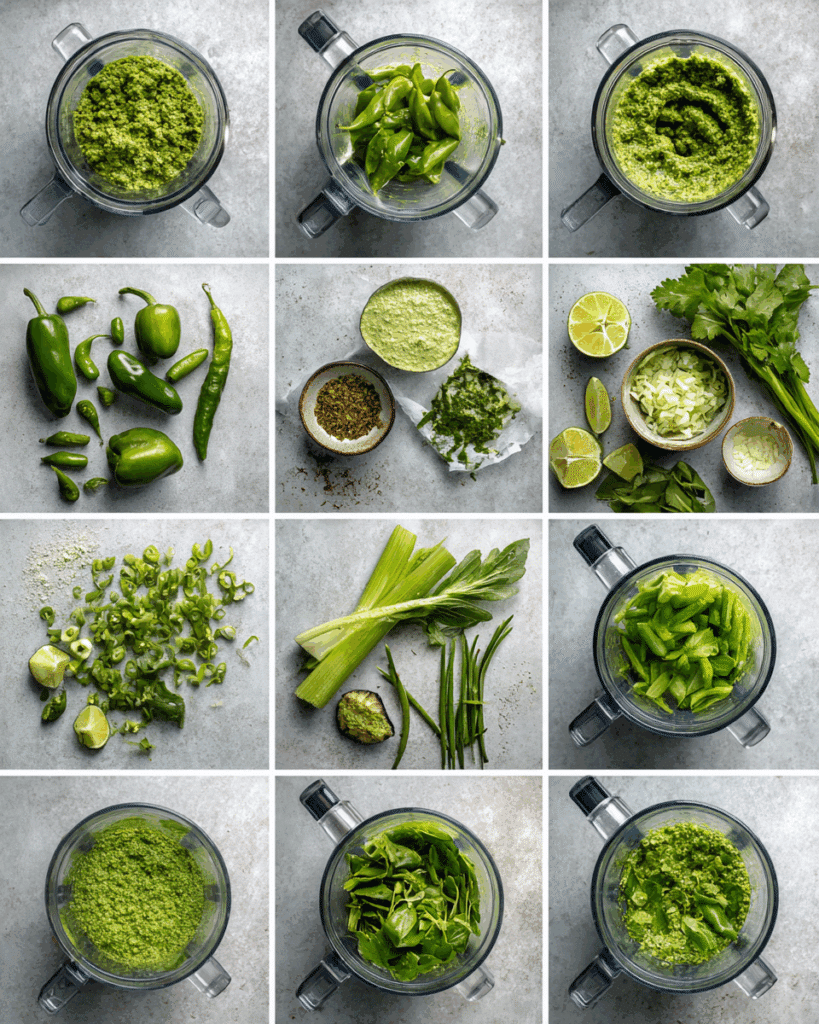
Making your own Thai Green Curry Paste from scratch might sound fancy, but it is actually very easy. The key is to have everything chopped and ready before you start blending. You can use a mortar and pestle for a traditional approach, or a food processor if you want a smoother and quicker result.
- Combine all the ingredients except the water in a high-powered blender or food processor. If you have a mortar and pestle, start by pounding the dry spices, then add the chilis and garlic, and finally mix in the wet ingredients like lemongrass and galangal.
- Blend or pound everything until it becomes a fine, thick paste. Scrape down the sides often to make sure everything is evenly combined.
- If the mixture is too dry, add one tablespoon of water at a time. You want it to be thick but not stiff.
- Once the paste is smooth, give it a taste. It should be spicy, fresh, and slightly salty with a citrusy lift.
- Use the paste immediately in your Thai green curry recipe or store it in a jar for later use.
If you would like to compare your results with authentic Thai cooking methods, you can look at RecipeTin Eats’ Thai Green Curry Paste Recipe and Hot Thai Kitchen’s version. Both are excellent examples of how traditional Thai cooks approach this paste.
Making your own paste is far better than buying a store-bought one because the aroma and freshness cannot be matched. Once you have this paste ready, you can easily prepare a full Thai green curry recipe, add it to soups, marinades, or even stir-fried noodles. It becomes your flavor base for so many dishes.
Tips & Tricks
Making Thai Green Curry Paste is both an art and a practice in patience. The first time I made it, I added too much water and ended up with something closer to soup than a paste. Over time, I learned that the secret lies in preparation and balance. Here are my most helpful tips to make sure your Thai Green Curry Paste turns out vibrant, aromatic, and full of life every single time.
1. Use fresh herbs whenever possible.
The flavor of Thai Green Curry Paste depends heavily on the freshness of the ingredients. Fresh lemongrass, galangal, and coriander stems make a huge difference. If you can, visit an Asian grocery store and buy them fresh instead of dried or frozen. The natural oils in these herbs release their fragrance beautifully when blended.
2. Control the heat level.
If you like your curry mild, reduce the number of Thai green chilis or replace a few with green bell peppers. For extra spice, keep the seeds or use bird’s eye chilis. Remember, Thai Green Curry Paste should be spicy but also balanced with other flavors like citrus and earthiness.
3. Toast the dry spices.
Before adding coriander, cumin, or white pepper, lightly toast them in a dry pan over medium heat for about 30 seconds. This simple step releases their natural oils and gives your Thai Green Curry Paste a deeper aroma.
4. Taste as you go.
One of the most important lessons in Thai cooking is to taste everything as you make it. If the paste feels too salty, add more fresh herbs or a squeeze of lime juice. If it is too mild, toss in another chili. Cooking is never just about following measurements, it is about developing your senses.
5. Use a strong blender.
If your blender struggles to break down tough ingredients like lemongrass, chop them finely before blending. A high-powered blender will give you a smooth, restaurant-style texture, but a regular one works fine if you blend longer.
6. Store properly.
Homemade Thai Green Curry Paste keeps well in an airtight jar in the fridge for up to a week. For longer storage, freeze it in small portions. I like using ice cube trays so I can pop out a cube whenever I want to make a quick curry.
7. Do not rush the blending.
Let your blender run for a bit to let the ingredients release their natural oils. This helps the paste become smoother and richer in color.
8. Adjust water carefully.
Add water slowly, one tablespoon at a time, until you reach the right consistency. Too much water can make the paste weak and dull the flavor.
By following these steps, you will master Thai Green Curry Paste and make it part of your cooking routine. Once you taste your own version, you will never go back to store-bought paste again.
Variations
One of the reasons Thai Green Curry Paste is so special is because it can change to fit your mood, the season, or the ingredients you have at home. Thai cooking is flexible, and so is this paste. Here are a few creative ways you can experiment while keeping that authentic taste alive.
1. Vegan Thai Green Curry Paste
If you want to make a vegan or vegetarian version, simply skip the dried shrimp paste. You can replace it with a teaspoon of miso paste or a dash of soy sauce to keep the umami flavor. This version is perfect if you want a plant-based curry that still feels deep and complex.
2. Mild Green Curry Paste for Beginners
If you are making this for kids or people who do not handle heat well, swap the Thai green chilis with green bell peppers or jalapeños. They add the same color but with a gentle taste. You will still get that familiar Thai Green Curry Paste aroma without overwhelming spice.
3. Extra Spicy Thai Green Curry Paste
For spice lovers, you can make your paste fiery by doubling the amount of Thai green chilis or adding a few bird’s eye chilis. Just be sure to balance it with more coriander and lemongrass to keep the flavor layered instead of just hot.
4. Thai Green Curry Paste with Fresh Basil
Sometimes I add a handful of Thai basil leaves to the blender for a more herbal, floral fragrance. It turns the paste slightly darker and makes it smell heavenly.
5. Coconut-Infused Paste
Blend a few tablespoons of coconut cream with your paste to make it creamier and softer. This version is perfect for mild curries or as a marinade for chicken or shrimp.
6. Smoky Thai Green Curry Paste
If you grill the chilis and garlic before blending them, your Thai Green Curry Paste will have a gentle smoky note that adds depth and complexity. It is an interesting twist that works beautifully with grilled meats.
7. Thai Green Curry Paste Jamie Oliver Style
Jamie Oliver has a fun and flexible approach to Thai food. His version often adds kaffir lime leaves and a bit of sesame oil for extra flavor. You can try something similar if you want a slightly different balance of citrus and spice.
The beauty of Thai Green Curry Paste lies in how adaptable it is. Whether you are following a traditional Thai green curry paste recipe or giving it your own twist, it will always bring life to your dishes. Once you start making your own variations, you will understand how this one simple paste can inspire endless meals.
Nutrition & Health Benefits
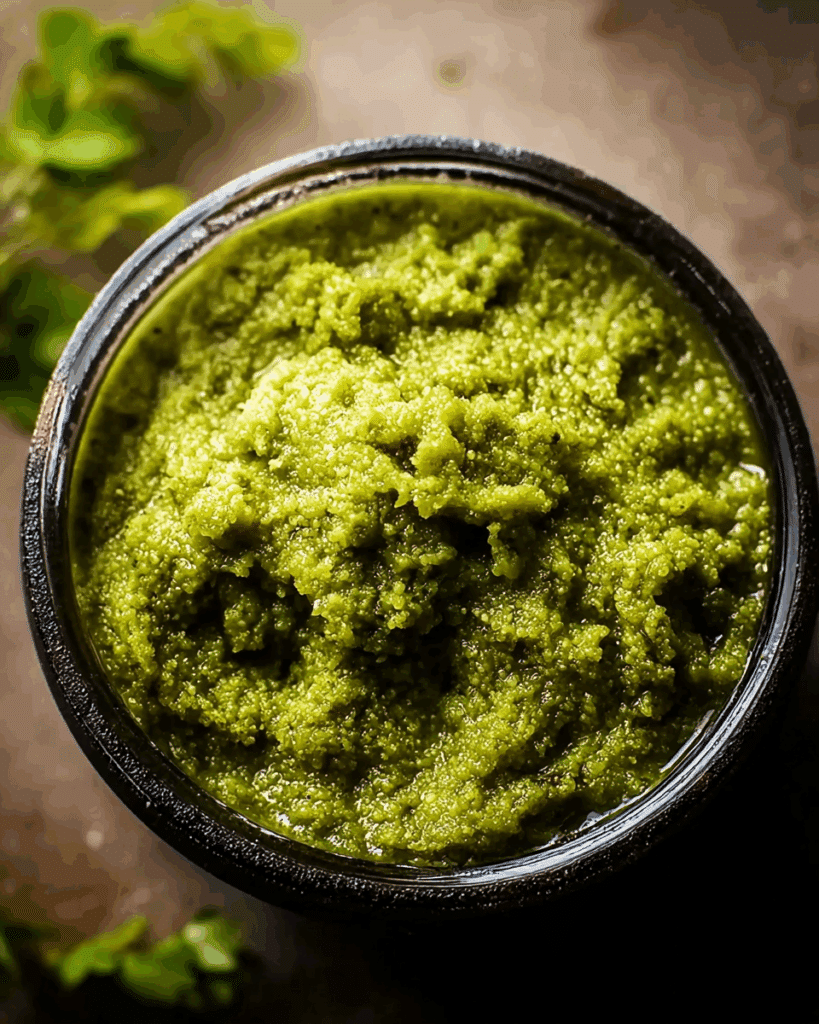
Besides its incredible taste, Thai Green Curry Paste is also surprisingly healthy. Because it is made entirely from natural ingredients like herbs, roots, and spices, it is packed with nutrients, antioxidants, and vitamins. Let’s look at why making Thai Green Curry Paste at home is not just delicious but good for you too.
1. Low in calories but high in nutrients.
A tablespoon of Thai Green Curry Paste contains about 30 calories, mostly from herbs and a bit of oil if added during blending. It has almost no fat and very little sugar, which makes it a great base for healthy cooking.
2. Boosts metabolism.
The green chilis in Thai Green Curry Paste contain capsaicin, which can help speed up metabolism and promote fat burning. It also helps with blood circulation and gives you that warm feeling that many people find energizing.
3. Aids digestion.
Ingredients like lemongrass and galangal have natural digestive properties. Lemongrass helps calm the stomach, while galangal is known for its anti-inflammatory benefits. Both work together to keep your digestion running smoothly.
4. Strengthens the immune system.
Garlic and coriander are loaded with antioxidants and compounds that boost the immune system. Garlic has antiviral properties, while coriander helps detoxify the body. This makes Thai Green Curry Paste not only flavorful but also healing.
5. Supports heart health.
Turmeric and cumin, both found in Thai Green Curry Paste, contain anti-inflammatory compounds that may help lower cholesterol and support heart function. Regularly using these spices in your cooking can contribute to overall cardiovascular wellness.
6. Balances blood sugar.
Coriander and turmeric are known to help regulate blood sugar levels, making Thai Green Curry Paste a wonderful choice for people who want to enjoy bold flavors while keeping their meals balanced.
7. Great for mood and stress relief.
Believe it or not, the aroma of Thai Green Curry Paste itself can boost your mood. The natural oils in herbs like lemongrass and lime zest create a calming, refreshing scent that lifts your spirits as you cook.
8. Fresh, not processed.
When you make Thai Green Curry Paste from scratch, you avoid preservatives, added sugars, and sodium that are often found in store-bought versions. It is pure, clean, and naturally nourishing.
In short, Thai Green Curry Paste is not only one of the most flavorful condiments in the world, but it is also a small jar of health benefits. When used in moderation, it turns any meal into a vibrant, nutrient-packed experience that is both satisfying and good for your body.
Make-Ahead, Storage & Freezing
One of the many reasons people love Thai Green Curry Paste is that it keeps so well. Once you make a batch, it becomes a reliable kitchen companion. I often make a big batch on Sunday afternoon, knowing that during the week I can throw together a quick curry, a stir-fry, or even a soup with very little effort.
Making Ahead
You can prepare Thai Green Curry Paste days in advance, and the flavor actually improves as it sits. When the ingredients have time to mingle, the lemongrass becomes softer, the galangal mellows, and the entire paste turns richer and more balanced. If you know you will use it within a few days, keep it in a clean glass jar with a tight lid and store it in the fridge. Add a thin layer of neutral oil like sunflower or vegetable oil on top before closing the lid. This oil acts as a barrier against air, keeping the paste vibrant and fresh.
Short-Term Storage
When stored properly, Thai Green Curry Paste lasts for up to one week in the refrigerator. Always use a clean spoon when scooping some out. Any contact with other food or moisture can shorten its freshness. I find that after about five days, the flavor gets deeper, almost as if the ingredients continue to cook together while resting.
Long-Term Freezing
If you make a large batch, freezing is the best way to keep it for several months. Spoon the Thai Green Curry Paste into an ice cube tray, filling each slot about two-thirds full. Once frozen, pop out the cubes and place them in a freezer-safe bag. Label it with the date so you remember when you made it. These frozen cubes can last for three to four months without losing flavor.
When you want to use some, just drop a cube into a hot pan or defrost it in the fridge overnight. The color might fade slightly after freezing, but the taste stays amazing. I actually find the texture easier to mix into coconut milk once thawed.
Reheating and Using Again
If you are using previously frozen Thai Green Curry Paste, sauté it in a bit of oil for one minute to reawaken the aroma before adding your other ingredients. This step gives the paste new life, and it will smell just as fresh as the day you made it.
Cooking smartly means cooking with convenience. Making Thai Green Curry Paste ahead of time lets you enjoy authentic Thai flavors any night of the week without the hassle of starting from scratch.
Common Mistakes to Avoid
Even though making Thai Green Curry Paste is fairly simple, a few small missteps can change how it turns out. I have made all of them myself in the beginning, and these lessons are what helped me finally get the perfect flavor and texture.
1. Adding too much water
Many beginners add too much water too early. This weakens the paste and makes it lose its punch. Always add water slowly, one spoon at a time, and stop as soon as everything blends smoothly. Remember, Thai Green Curry Paste should be thick enough to coat the back of a spoon, not runny.
2. Using dry or old herbs
Fresh herbs are what give Thai Green Curry Paste its bright flavor. If your lemongrass or coriander stems look dull or dried out, they will not release enough oils. Always use fresh produce for the best results.
3. Forgetting to toast spices
Skipping this step makes the flavor flat. Toasting coriander and cumin seeds releases their aroma and makes the paste smell and taste more authentic. It only takes a minute, and the difference is big.
4. Not balancing the flavors
If your Thai Green Curry Paste tastes harsh or overly spicy, you probably need to balance it with something fresh, like extra lime zest or a bit of coriander. The best curry pastes taste complex, not one-dimensional.
5. Using the wrong type of chili
Different types of green chilis have different levels of heat and flavor. Thai green chilis are small and very spicy, while cayenne peppers are milder. If you mix them incorrectly, your curry may end up too hot or too mild. It is always better to taste a small piece of chili before adding it so you can gauge the spice level.
6. Not cleaning lemongrass properly
Lemongrass has tough outer layers that must be removed. Only the tender white part near the base should be used. Using the tough part makes your Thai Green Curry Paste fibrous and hard to blend.
7. Skipping the shrimp paste or using too much
Shrimp paste brings saltiness and depth. If you skip it entirely, the flavor may feel lighter, which is fine for a vegetarian version. But if you use too much, it will overpower the herbs. Always measure carefully and blend well so it distributes evenly.
Once you understand these small details, making Thai Green Curry Paste becomes second nature. Every batch will taste slightly different depending on your ingredients, but that is the charm of Thai cooking. It is about balance, intuition, and joy.
Cultural or Historical Background
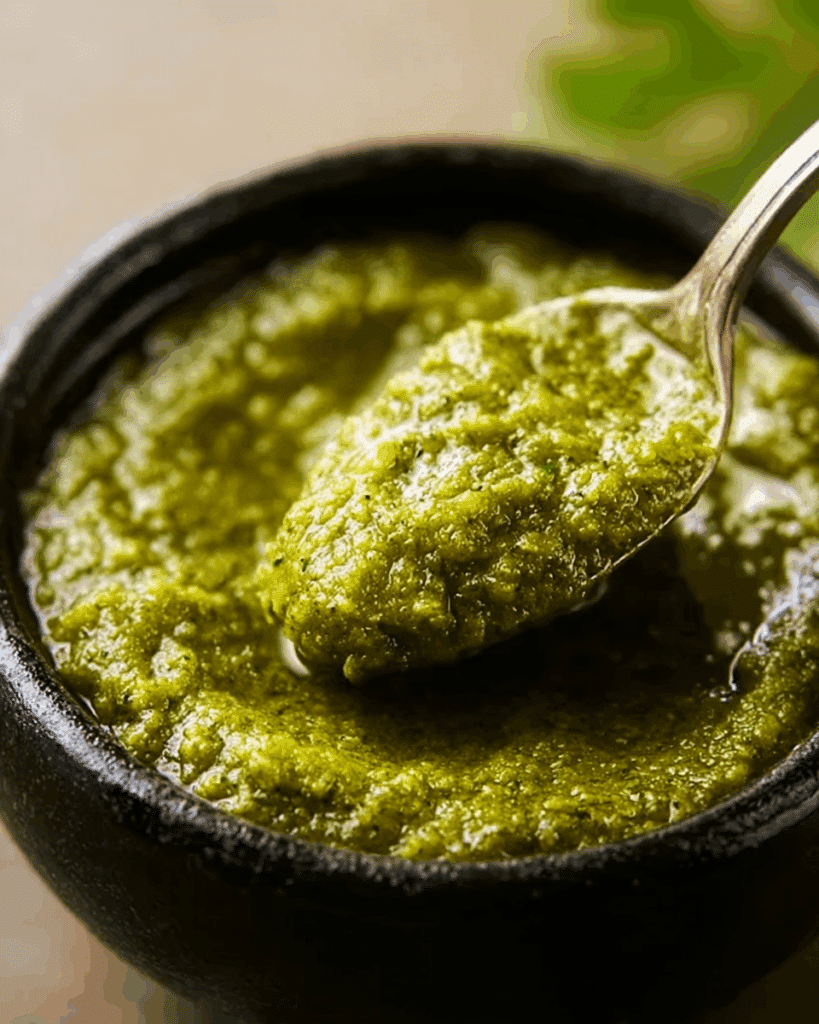
Thai Green Curry Paste is more than just an ingredient; it is a piece of Thailand’s rich culinary heritage. To understand its story, you need to picture traditional Thai kitchens long before blenders and food processors existed. Women and men would spend hours carefully pounding herbs and spices in large stone mortars, releasing each aroma slowly.
The green curry itself is called Gaeng Keow Wan in Thai, which means “sweet green curry.” The word “sweet” does not refer to sugar but to the soft, gentle tone of the green color. Thai Green Curry Paste was created to highlight local ingredients available year-round, such as fresh chilis, lemongrass, and galangal. Over time, the recipe traveled from central Thailand to every part of the country, and each region began adding its own twist.
In Northern Thailand, cooks prefer more herbs and less spice, while in the South, they often add shrimp paste and extra chilis for a fiery edge. Despite these differences, Thai Green Curry Paste always keeps its essential identity: green, aromatic, and lively.
When Thai immigrants brought their cuisine abroad, this paste became one of the first ways people outside of Thailand experienced true Thai flavors. Today, you can find Thai Green Curry Paste jars in almost every international grocery store, but homemade versions still hold the magic of authenticity.
Many traditional Thai families believe that pounding curry paste by hand is a way to connect with the ingredients, showing patience and respect for nature’s gifts. The rhythm of pounding is almost meditative. In modern kitchens, blending has replaced pounding for convenience, but the love and intention behind it remain the same.
What makes Thai Green Curry Paste even more fascinating is how it adapts to different dishes. In Thailand, it is not only used for curries but also for soups, grilled meats, and even omelets. This flexibility has helped it remain one of the most beloved condiments in Thai cuisine.
So the next time you prepare Thai Green Curry Paste, remember that you are continuing a culinary tradition that goes back centuries. Each spoonful carries the story of Thai culture, craftsmanship, and the endless joy of cooking.
Serving Suggestions
Once you have your homemade Thai Green Curry Paste ready, you can create an incredible variety of dishes. It is the heart of many Thai recipes, and its versatility makes it a kitchen treasure. The key is to pair it with ingredients that balance its vibrant heat and fragrant herbs.
Classic Thai Green Curry
The most traditional use for Thai Green Curry Paste is of course Thai green curry itself. To make it, sauté a few tablespoons of your paste in coconut oil until fragrant, then add coconut milk and your choice of protein. Chicken, shrimp, tofu, or mixed vegetables all work perfectly. Finish with a handful of Thai basil and a squeeze of lime juice. The creamy sauce, fragrant herbs, and spicy undertones make this dish unforgettable.
Stir-Fries
You can use Thai Green Curry Paste as a stir-fry base. Mix one tablespoon of paste with a bit of soy sauce and fish sauce, then stir-fry with vegetables like broccoli, snow peas, and bell peppers. Add rice or noodles for a quick and colorful meal. The paste clings beautifully to the food, coating everything with flavor.
Soups
For a comforting Thai-style soup, stir a spoonful of Thai Green Curry Paste into chicken or vegetable broth. Add coconut milk, sliced mushrooms, shredded chicken, and fresh herbs. The paste instantly transforms a simple soup into something full-bodied and fragrant.
Marinades
You can mix Thai Green Curry Paste with yogurt, lime juice, or coconut milk to create a fantastic marinade for chicken, shrimp, or tofu. Let it sit for at least an hour so the flavors sink in. Then grill, bake, or pan-fry. The result is aromatic, tender, and slightly smoky.
Rice and Noodles
Sometimes, the simplest dishes are the most satisfying. Try stirring a teaspoon of Thai Green Curry Paste into cooked jasmine rice for a subtle flavor boost, or toss it into noodles with vegetables and a splash of lime. It’s an easy way to bring Thai flair to everyday meals.
Creative Ideas
You can also use Thai Green Curry Paste in unexpected ways. Mix it into scrambled eggs for a spicy breakfast, blend it with mayonnaise for a zesty sandwich spread, or even use it as a base for salad dressing by whisking it with olive oil and lime juice. These little touches make your meals more exciting and show how versatile this paste really is.
Every dish you make with Thai Green Curry Paste carries that same energy you find in Thai kitchens vibrant, balanced, and full of life.
Many people who fall in love with Thai Green Curry Paste start exploring other related recipes and cooking ideas. Here are some of the most common topics and how they connect naturally to your paste:
Thai Green Curry Paste Recipe
This is what started it all. Making your own Thai Green Curry Paste from scratch gives you full control over flavor and freshness. Once you master it, you can easily adjust it for any dish you want.
Thai Green Curry Paste Ingredients
Every cook wants to know what goes into this powerful blend. The combination of lemongrass, galangal, and green chilis defines its character. Each ingredient plays a role in balancing spice, sweetness, and citrus.
Thai Green Curry Recipe
Once you have the paste, the next natural step is to make the curry itself. Thai Green Curry pairs beautifully with coconut milk, bamboo shoots, and proteins like chicken or tofu. It’s one of Thailand’s most famous dishes for a reason.
Thai Green Curry Paste Recipe Authentic
Authenticity is something cooks care deeply about. The authentic version of Thai Green Curry Paste includes shrimp paste and galangal, ingredients that give it true Thai depth. Homemade versions taste fresher and more complex than store-bought brands.
Thai Green Curry Paste How to Use
This question comes up all the time. The answer is simple: use it as a base for curries, soups, or marinades. A spoonful can transform almost any dish into something aromatic and full of flavor.
Thai Green Curry Paste Lidl
Many people buy store brands like Lidl’s version, but once they try making Thai Green Curry Paste at home, they rarely go back. Homemade paste has more character and brightness.
Best Thai Green Curry Paste
Everyone wants the best, and the best one is usually the one you make yourself. Fresh ingredients and balance make all the difference.
Thai Green Curry Paste Recipe Jamie Oliver
Jamie Oliver’s take on Thai Green Curry Paste adds a bit of fun and creativity. He often includes kaffir lime leaves and extra herbs, proving that recipes can evolve while keeping their heart intact.
Each of these topics connects to Thai Green Curry Paste and helps people discover more about Thai cooking. When you make it yourself, you become part of that global conversation of food lovers exploring new tastes.
Conclusion
Thai Green Curry Paste is more than just a recipe; it’s an experience. Making it by hand, blending those fresh ingredients, and breathing in that unmistakable aroma connects you to the spirit of Thai cooking. It’s bright, spicy, and deeply satisfying.
When I think back to my early days learning Thai cuisine, I remember the laughter, the street food vendors, and the smell of herbs filling the air. That same energy is what I try to bring into every kitchen through Just Thai Recipes. Thai Green Curry Paste is the heart of so many traditional dishes, and by learning to make it, you are learning a piece of Thailand’s soul.
So now that you have everything you need, go ahead and make your own batch. Taste it, adjust it, make it yours. And when you sit down to enjoy that first spoonful of curry, know that you have created something both delicious and deeply rooted in history.
Cooking is not just about feeding yourself; it’s about creating memories. And this recipe, simple as it is, will give you many of them.
FAQ
What can I make with Thai Green Curry Paste besides curry?
You can use it in soups, marinades, stir-fries, or even mixed into rice or noodles. It adds instant flavor and turns everyday dishes into something special.
Can I freeze Thai Green Curry Paste?
Absolutely. Freeze it in ice cube trays, then transfer the cubes to a freezer-safe bag. They will last up to four months, and you can easily use one cube at a time for quick meals.
How long does Thai Green Curry Paste last in the fridge?
When stored properly in an airtight jar with a layer of oil on top, Thai Green Curry Paste stays fresh for up to a week in the refrigerator.
Can I make Thai Green Curry Paste without shrimp paste?
Yes, you can. Replace it with a teaspoon of miso paste or a splash of soy sauce for a vegetarian version. The flavor will still be rich and savory.
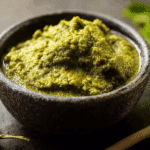
Thai Green Curry Paste
- Prep Time: 15 minutes
- Cook Time: 5 minutes
- Total Time: 20 minutes
- Yield: About 1 cup (8 servings) 1x
- Category: Condiment, Sauce
- Method: Blending
- Cuisine: Thai
- Diet: Halal
Description
A fragrant, spicy, and aromatic homemade Thai Green Curry Paste made with fresh herbs, green chilis, lemongrass, and galangal. Perfect for curries, soups, and marinades, this paste captures authentic Thai flavor right in your kitchen.
Ingredients
- 4 green cayenne pepper chilis, deseeded and chopped
- 6 Thai green chilis, chopped
- 2 red shallots or eschallots, chopped
- 2 lemongrass stems, trimmed and finely chopped (about 2.5 – 3 tbsp)
- 2 tbsp galangal, grated
- 5 cloves garlic, chopped
- 2.5 tsp dried shrimp paste (Belacan)
- 2 tsp lime zest, grated
- 1 tsp ground coriander
- 1 tsp ground cumin
- 1/4 tsp white pepper
- 1/4 tsp turmeric
- 2 tbsp chopped coriander or cilantro root and stem
- 1/4 cup coriander or cilantro leaves, loosely packed
- 2–3 tbsp water, as needed
Instructions
- Prepare all ingredients by washing, trimming, and chopping them as listed.
- Place all ingredients except water into a high-powered blender or food processor.
- Blend until a smooth paste forms, scraping down the sides occasionally to combine everything evenly.
- Add water one tablespoon at a time if needed to help blend the mixture smoothly.
- Taste and adjust the flavor if necessary, adding more lime zest or chilis to balance.
- Use the Thai Green Curry Paste immediately in your recipe or store for later.
- For storage, keep the paste in an airtight jar in the refrigerator for up to one week or freeze for up to one month.
Notes
- Note 1: Adjust the type and number of chilis based on your spice tolerance. Fewer Thai chilis make the paste milder.
- Note 2: Only use the tender white part of lemongrass for the best texture and flavor.
- Note 3: Substitute galangal with ginger if unavailable, but flavor will be slightly different.
- Note 4: Dried shrimp paste adds depth; omit for a vegan version.
- Note 5: Coriander root and stems add strong herbal flavor; if not available, use extra leaves.
Nutrition
- Serving Size: 1 tablespoon
- Calories: 30
- Sugar: 0.5g
- Sodium: 80mg
- Fat: 1g
- Saturated Fat: 0g
- Unsaturated Fat: 1g
- Trans Fat: 0g
- Carbohydrates: 5g
- Fiber: 1g
- Protein: 1g
- Cholesterol: 0mg
Keywords: Thai Green Curry Paste, Thai green curry paste recipe, Thai curry paste, homemade curry paste, authentic Thai paste

